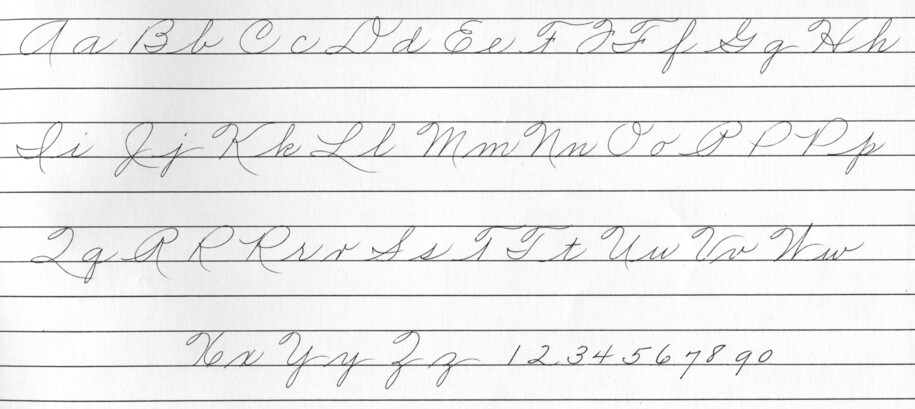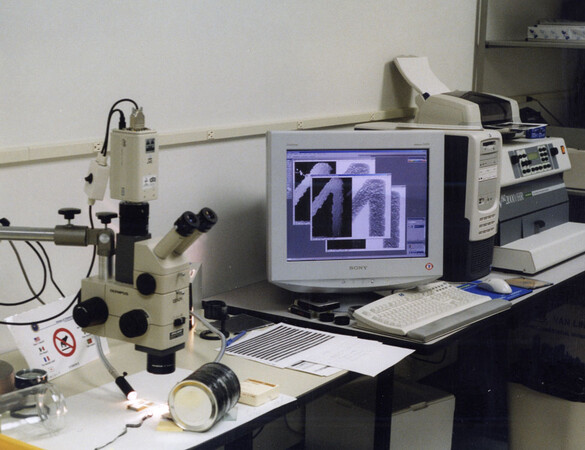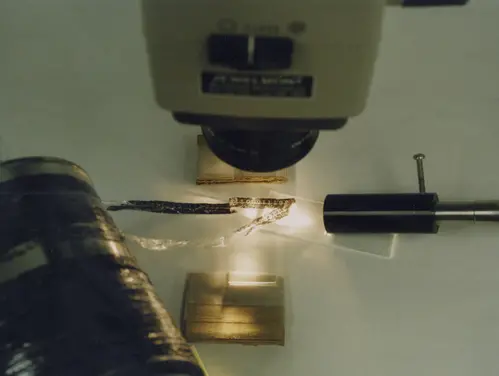On this page...
The Questioned Documents Section provides a comprehensive range of document examinations and hand writing identification services to authorized agencies in the State of Iowa.
This area of forensic science is a broad field where both handwritten and machine produced documents are characterized and compared to determine facts about their origins. A document is a substrate with marks or symbols which convey thoughts. A document in a criminal matter is the only physical evidence that portrays thoughts.
The forensic document examiner makes scientific examinations, comparisons, and analyses of documents in order to:
- Establish genuineness or non-genuineness
- Reveal alterations, additions, or deletions
- Identify or eliminate persons as the source of handwriting
- Identify or eliminate the source of machine produced documents
- Visualize other impressions, marks, or relevant evidence of any kind
- Write reports and give testimony
Other problems may involve the decipherment, restoration, or enhancement of obscured, deleted, or damaged parts of documents.
Back to topCASE TYPES
- Death Investigations
- Threats
- Drug manufacturing and distribution
- Kidnapping
- Inappropriate contact
- Witness tampering
- Missing persons
- Burglary
- Arson
- Embezzlement
- Fraud and forgery
- Election law violations

Forensic document examination includes the expertise of handwriting identification. Handwriting includes cursive or script style writing, hand printing, signatures, numerals, and other written marks or signs. Forensic document examination does not involve the employment of calligraphic or engrossing skills, nor does it involve a study of personality or character.

EQUIPMENT
Equipment used in forensic document examination includes: microscopes and additional optical aids; photographic and computer imaging devices; and a wide variety of imaging materials adaptable for use with a variety of lighting methods, including those involving radiant energy in the ultraviolet, visible, infrared, and other regions of the electromagnetic spectrum. There are also electrostatic devices for the visualization of indentations and other features present on paper. Other analytical instrumentation may be used where appropriate.
Back to topANONYMOUS NOTES AND LETTERS
Anonymous notes and letters can make for frustrating cases for investigators. The writer will often attempt to disguise his/her handwriting and perhaps take special care not to leave latent prints. In many cases, there is no logical suspect. However, anonymous notes are seldom random. The collection of normal daily writings from persons with some association to the case is advised.
Anonymous notes should be examined for latent prints at the laboratory. Contrary to a popular misconception, subsequent handling of the note does not preclude a successful latent print exam. Note that latent print examination on documents is done after questioned document examinations.
There may be other possible sources of clues to the identity of the writer, depending upon the circumstances. Consider discussing your case with the Questioned Document examiner.
Back to topDOCUMENT EXAMINATION & LATENT PRINTS
Many officers feel that because a questioned document has been handled by several individuals, the processing for the suspect's latent prints will prove futile. However, because of circumstances surrounding the handling of a typical questioned document, if the document can be protected when it is picked up by the investigating officer, the latent print examination will not necessarily be affected by the previous handling. Remember, only one identifiable print which proves useful in the investigation is important evidence.
Back to topHANDLING DOCUMENT EVIDENCE
- Transparent covers are useful for questioned documents, but not always necessary. They do allow an investigator to view the document without adding any additional fingerprints or impressions. Manila envelopes are also suitable.
- Use covers or envelopes that are large to hold the document without folding. Wear gloves when handling questioned documents.
- Do not feed questioned documents through an auto-document feeder on a copier.
- Keep documents away from excessive heat, light or dampness.
- Maintain a chain of custody.
- In general, handle documentary evidence as little as possible.
DO NOT:
- Do not use pins, staples, clips or tape on documents.
- Do not make perforations in documents.
- Do not make any new folds in documents. If it is necessary to unfold or open a document for inspection, remember how it was folded (This may be important later). Once unfolded, keep open if practical, in proper size envelope.
- Do not dust document with fingerprint powder. Documents can be photographed and chemically processed in the laboratory.
- Do not write or otherwise mark on documents. Small identifying marks may be made on the back bottom corner. Description of the matter should be written on separate sheet of paper.
- If any writing is to be made on protective cover, it should be done before document is inserted.
- Do not touch document with a pencil, pen or other pointed instrument.
- If you have a jigsaw puzzle of torn pieces of document, DO NOT paste or tape them together. Send pieces into the document examiner for a reconstruction and she/he will photograph (or photocopy) the results for you.
- Do not make any erasures on document.
- Do not trace over questioned document.
- Do not tear document or make unnecessary repairs.
- Do not underscore or encircle words on questioned documents. If notes are necessary, make a photocopy and place notations on the photocopy.
- Do not carry disputed documents loosely in the pocket.
- Do not allow handling of unprotected document by ANYONE. Show others only a photograph or photocopy.
Back to top
